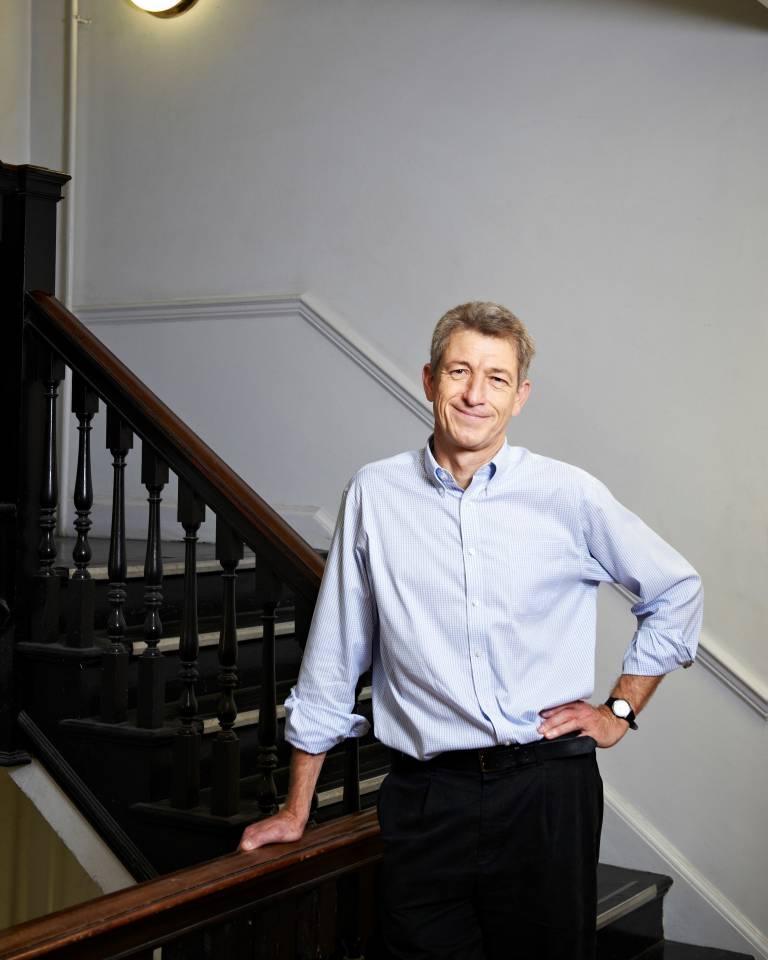Q & A with Professor Nick Fox, Director of the Dementia Research Centre
19 September 2020
We spoke to Professor Nick Fox Director of the Dementia Research Centre and Professor of Clinical Neurology about his research work in familial Alzheimer's disease.

1. What influenced your decision to work in dementia research and what inspires you most working in this field?
My decision to work in dementia research came from having done a junior hospital doctor job working in the area and finding the topic interesting and important. However, like most things in life, it came down to an opportunity presenting itself. Before doing medicine I had done a physics degree and one of the consultants at the National hospital was interested in looking at brain imaging (MRI) in familial Alzheimer’s disease and thought that my physics background might be help. He suggested I apply for a research fellowship from the Alzheimer’s Society. I wasn’t entirely sure about what I wanted to do at that stage but he suggested “we can put the application in and you can decide later”… so it was not part of any well thought out plan – but I certainly haven’t regretted it and have been very grateful that I was awarded that fellowship.
2.Can you very briefly tell us about your journey into dementia research?
As part of my clinical fellowship I met families where Alzheimer’s disease affected families at a young age - it felt a privilege to work with them and important to understand what changes were detected at the onset of problems to improve diagnosis and help people clinically but perhaps as important – to design treatment trials that could offer interventions (drugs or other approaches) at a very early stage. From that first fellowship I then applied to the MRC and got further fellowships and for a while did a mix of research and finishing off my clinical training in hospitals in London. I then was lucky enough to get a consultant appointment here at the National Hospital for neurology and have since that time combined clinical work and my research.
3. What are your most significant research accomplishments in this field?
I feel lucky to have had a couple of ideas that worked out – perhaps a key one was an idea that we could improve detection of the early changes that were occurring in the brains of people with these illnesses by direct computerised comparison of the first brain scan with a second scan. The principle being that while everybody’s brains are very different in size and shape these diseases cause brain loss and that could be detected quite sensitively if you subtracted a second scan from the first and worked out what had changed.
4. What has been the impact of your research, what did it change about the way people approach the field?
Research is increasingly collaborative and so the impact of any one person’s research needs to be seen in the context of all the other contributions. I think the development of our technique for measuring brain changes did have an impact at the time in a couple of ways firstly - helping to show that there was a long preclinical period to Alzheimer’s, where there were changes in the brain before symptoms. This gives an opportunity to intervene (give treatments) when there is most to save and when people are still functioning normally. I’d like to think that I have helped push the field towards trials in familial Alzheimer’s disease (who are so keen to help with research) and also towards intervening earlier in the disease process. My techniques were incorporated into a number of clinical trials to show whether or not a treatment slowed brain shrinkage.
5. What’s next for your research in this field?
I think a really exciting area at the moment is the use of blood biomarkers after years of searching for effective markers I do feel we do now have markers that are very promising. I feel also that it’s important to engage patients and families in the research and also in providing support. For those that are interested here is a link to Rare Dementia Support Groups which include familial Alzheimer’s disease.
 Close
Close

